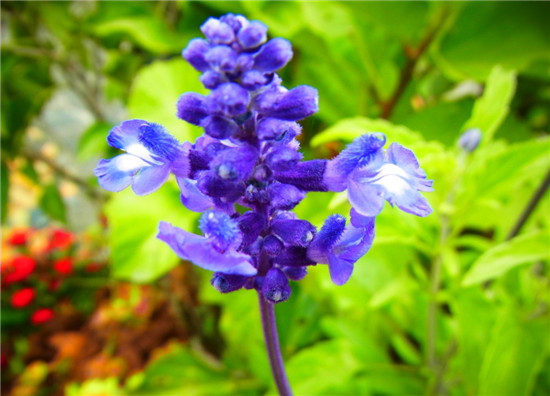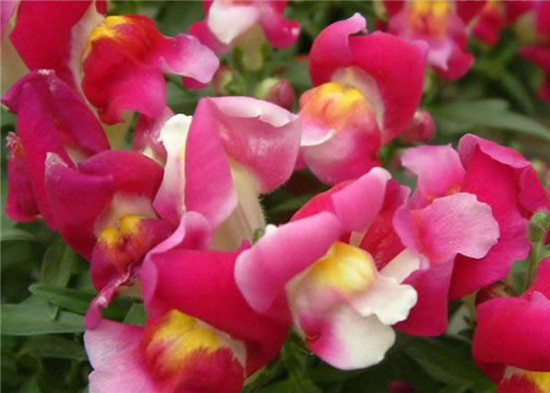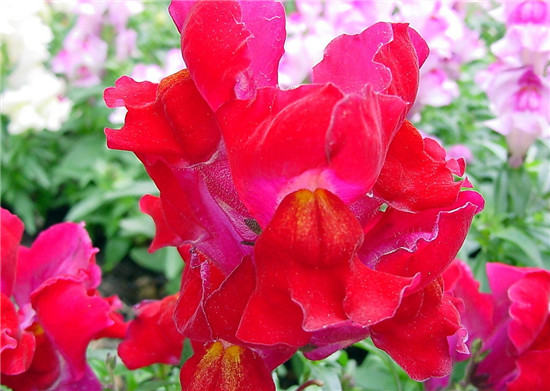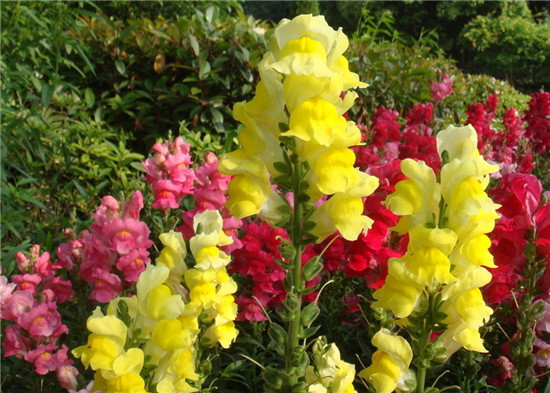[culture method of goldfish grass] how to culture goldfish grass
When it comes to goldfish, many people will mistakenly think that it is a kind of aquatic plant for cultivating goldfish. In fact, it is a very beautiful flower. Next, let's learn about goldfish and its planting method.

Goldfish grass is a kind of herbaceous plant that has been born for many years. It can be potted, because it has gorgeous flowers and colors, so it is very suitable for viewing. The reason why goldfish grass is so called is because its flower shape is the same as goldfish. At the same time, it is also blindly traditional Chinese medicine, which can clear heat and detoxification and cool blood and detumescence.
Because it has many colors and is very good-looking when it is open, so now many people will choose to decorate their homes with goldfish grass, which makes it very popular among many flowers.

The culture method of goldfish grass
1. Soil: goldfish grass does not have high requirements for soil, and the soil should use slightly acidic sandy loam which is fertile, loose and well drained.
2. Watering: goldfish grass is sensitive to water, the potted soil must be kept moist, and potted seedlings must be fully watered. However, the drainage of the basin soil should be good, and there should be no stagnant water, otherwise the root system will rot and the stems and leaves will wither and wither.
3. Sunshine: goldfish grass is a light-loving herb. Under the condition of sufficient sunshine, the plant is short, cluster-shaped and compact, with neat growth, highly consistent, neat flowering and bright colors. Under the semi-overcast condition, the plant growth was higher, the inflorescence elongated and the flower color was lighter.
4. Temperature: goldfish grass is cold-tolerant, not heat-resistant, and suitable for growth, 7-10 ℃ from September to March and 13-16 ℃ from March to September. The seedlings pass the vernalization stage under the condition of 5 ℃. High temperature was disadvantageous to the growth and development of goldfish grass, the optimum flowering temperature was 15-16 ℃, and some varieties had no branching when the temperature exceeded 15 ℃, which affected the plant state.

5. Fertilization: goldfish grass should strengthen fertilizer and water management. Attention should be paid to the coordination of nitrogen, phosphorus and potassium in fertilization. Goldfish grass has rhizobium, itself has the effect of nitrogen fixation, in general, there is no need to apply nitrogen fertilizer, an appropriate amount of phosphorus and potassium fertilizer can be increased. During the growing period, combined watering with fermented oil residue water is applied every half a month, and when flower buds appear, it is better to spray 0.1% UV 0.2% potassium dihydrogen phosphate solution, and loosen the soil and weed before each fertilization.
6. Pruning: when the seedlings of goldfish grass grow to about 10 cm, they can do coring treatment to shorten the plant height, increase the number of lateral branches and increase the flowers. When pruning, cut off the sick and weak branches, withered old branches and overdense branches, and cut off the flowering branches after each flowering, so as to promote the new branches to sprout and continue to blossom.

Matters needing attention in the culture of goldfish grass
1. Variety selection: potted goldfish grass should choose varieties with low plant and multiplication of flowers in order to improve the ornamental value of potted plants.
2. Pot and soil selection: pot containers should use mud pots or plastic pots with a diameter of about 15 meters, but the air permeability is better. The cultivation medium should be loose, fertile and well-drained soil or evenly mixed with rotten leaf soil, peat and edible plant ash. Apply some dried animal manure or cake fertilizer before planting, and slightly add bone powder or calcium superphosphate as base fertilizer.
3. Watering and fertilization: watering thoroughly after planting, and then watering the basin soil as soon as it dries. During the growth period, rarefied liquid fertilizer dominated by nitrogen and potassium fertilizer was applied every 10 days, and 0.1% potassium dihydrogen phosphate was sprayed during the bud period to make the flowers colorful. At ordinary times, it is necessary to prevent the accumulation of water in the basin and pay attention to often loosening the soil.
4. Pruning: after flowering, the aboveground part can be cut off and watered once. After about a week, new branches can germinate, and then apply dilute liquid fertilizer every 10 days or so until flower buds are formed. Usually need to pay attention to appropriate watering, summer to appropriate shade to cool down, so that autumn can blossom.
The above is the whole content of how to cultivate goldfish grass for you. I hope this article can help you. Please continue to follow us.
- Prev

[the growth process of Impatiens balsamina] the growth process of potted impatiens
[the growth process of Impatiens balsamina] the growth process of potted impatiens
- Next

Planting methods of safflower dragon spitting beads planting skills of safflower dragon spitting beads
Planting methods of safflower dragon spitting beads planting skills of safflower dragon spitting beads
Related
- Wuhan Hospital Iron Tree Blooming Result Was Instantly Frightened by the Gardener Master
- Which variety of camellia is the most fragrant and best? Which one do you like best?
- What is the small blue coat, the breeding methods and matters needing attention of the succulent plant
- Dormancy time and maintenance management of succulent plants during dormancy
- Minas succulent how to raise, Minas succulent plant pictures
- What are the varieties of winter succulent plants
- How to raise succulent plants in twelve rolls? let's take a look at some experience of breeding twelve rolls.
- Attention should be paid to water control for succulent plants during dormant period (winter and summer)
- Watering experience of twelve rolls of succulent plants
- Techniques for fertilizing succulent plants. An article will let you know how to fertilize succulent plants.

